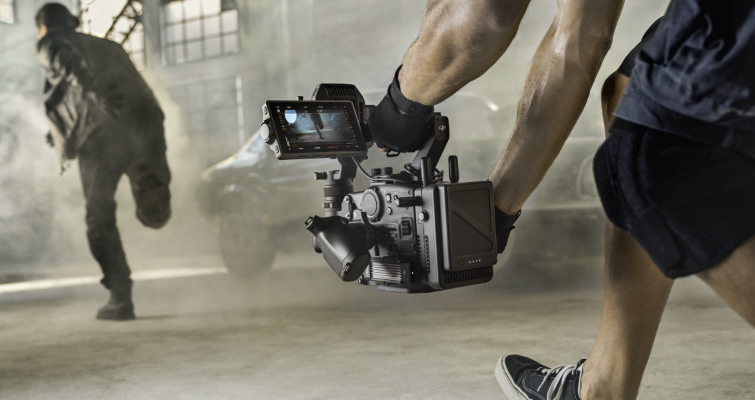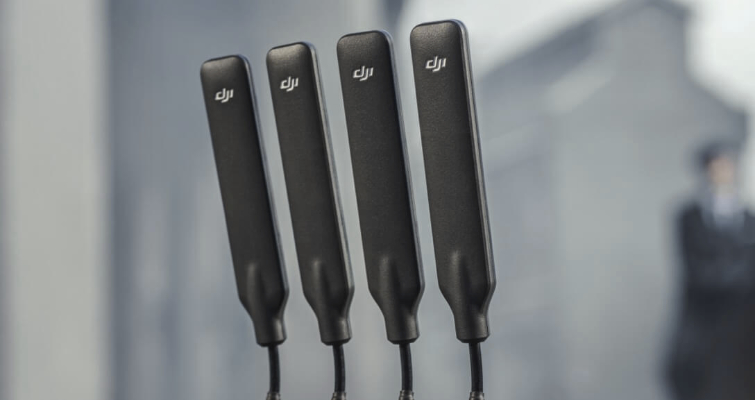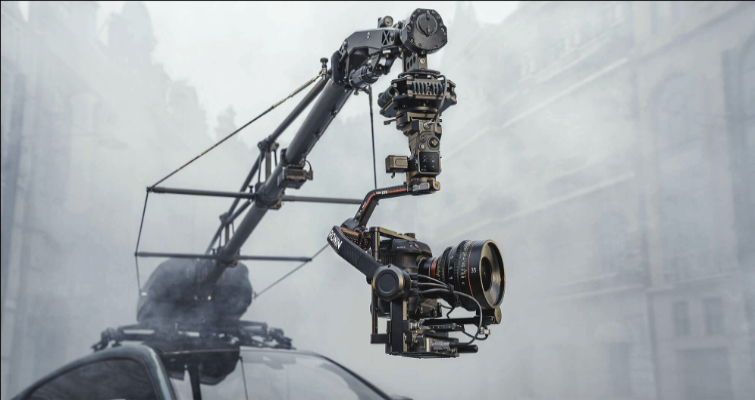
How DJI Won Over the Film Industry
DJI of ten years ago wasn’t the electronics powerhouse it is today. Here’s how the company disrupted the drone and stabilization industry.
To the southwest of Shenzhen, Nanshan District is the home of DJI and where they carefully and territorially plan their product campaign releases. But how did they get here? What product releases sealed the deal for us to start investing not just in drones, but now in highly-stable camera hybrid systems?
The problem for western media reporting on a private Chinese company is that you survive on morsels of information and the occasional meeting with their staff. You have to talk to the users, especially on the professional side of the business; those numbers are now huge, and the products have become standard across the production world.

What happened to 3DR?
The small drone industry used to be shared by DJI and an American start-up called 3DR. Both had their craft and their own OS and stabilization tech. But by 2015, 3DR had backed off making drone hardware and concentrated only on software. The pressure and product roadmap from DJI were just too hot for them.
By this time, DJI was also targeting professional cinematographers, producers, directors, and most other image makers. People like Joe Jamieson, the digital tech on the first season of The Grand Tour. He was responsible for wrangling the footage from the X5R camera on the Inspire 1 drone.
“It’s a great camera, so sharp and quite impressive. Some of the best 4K out there for the size of the product.” But that camera had limitations, as you had to adhere to its ecosystem and use their software to read the drive and transcode off it. That soon changed as new software was published.

Discovery firsts
Big broadcasters like Discovery started to look at the stabilization benefits of DJI’s smaller items. Producers understood that programs that traveled light in places like desert terrains could achieve Jib-like shots with the OSMO range of handheld gimbals. But, they achieved far more than that. Putting the OSMO on a 15-foot pole and controlling it from the app gave you brilliant top shots.
Producer Mark Bridge commented, “You can drop it out of the window on a pole six inches from the ground and have one person controlling the head with their phone. You get shots that you wouldn’t otherwise be able to with, say, a proper how-loader rig.”
Even when they online the programs, they found that carefully shot OSMO footage was a good match for their Sony broadcast cameras. “The OSMO shots looked very expensive like you’ve got proper rigs set up.”
The Circle Drone Film

When you get an A-list Hollywood Oscar-winning cinematographer like Claudio Miranda experimenting with drone-only filmmaking, it’s worth finding out if he’s serious. He made a film called The Circle with the Inspire 2 drone, but only with that drone. This is a small camera with an MFT sensor, the X5S, but here is Miranda, who usually shunned small cameras.
He explained his thinking, “Originally, I wasn’t looking at using the camera because I don’t like small cameras. There’s no highlight range; there’s no dynamic range. They just clip and look terrible. So I just did a test, and I was kind of amazed at how well it looked.”
Perhaps the most innovative way they used the Inspire on The Circle was the handover moves where a camera operator would “catch” the drone and then use it as a stabilized camera, walking into rooms without any interruption in the shot.
“We would do the hand-off and then turn off the motor, so we could preserve dialogue as well.” They also put the drone on dollies a lot, so Claudio would just be using the camera. Usually, he would have used a crane for the shot.
With the DJI app, you could also control the camera like a Preston camera control unit. A focus puller would use it similarly to a three-channel lens and camera controller.
Claudio was able to light like he usually does, which amazed him. There was no allowance for such a small camera where he might have thought it would need more light. “I don’t know how they got the camera to look so good,” he said.
From OSMO to Ronin
DJI started to look at becoming a replacement technology in the professional field with their Ronin range of gimbal products. They also added Master Wheels for remote control of your Ronin stabilized camera.
The Ronin 2 gimbal made inroads into television drama as a traditional camera gimbal and as a remote head with the Master Wheels. It was so easy to use, especially if you wanted to put the camera in places quickly. DOPs were leaving their cameras on the Ronin 2 almost permanently so they could either use the gimbal handheld or as a remote device.

The Ronin range morphed into a range of gimbals, with the RS3 and RS3 Pro being the latest. But there were also cameras. The Action 2 decided to disrupt GoPros lead in the action cam field, and then there was the Ronin 4D camera, the first of its kind. It’s a cinema camera with a gimbal as part of the camera, not separate.
DJI was now gunning for the REDs of this world but with this extra value of already stabilized footage. The camera is either 6 or 8k with a 35mm full-frame CMOS image sensor, a DX Mount, and support for other mount units. They also introduced their own lenses in 24mm, 35mm, and 50mm. There are also LiDAR focusing aids and built-in CFexpress Type-B slots.
More industry disruption
Now DJI is harnessing its R&D by providing transmission products to transmit video from the camera to a receiver at a claimed 6km in an ideal scenario. That looks like 1080/60p at 50Mbps for monitoring purposes, but the product will only get more refined.

There is also their first microphone product, which is a lapel-type radio microphone. Don’t forget the drones with the Mavic 3 featuring a Hasselblad 5280×3956 camera.
The professional filmmaker trusts their DJI products. They used to have a reputation for releasing beta software, but even that has improved. Where they go from here is anyone’s guess but if you are the incumbent technology in the field of image capture or even audio capture, then beware the Chinese dragon.
Cover image via Tada Images





